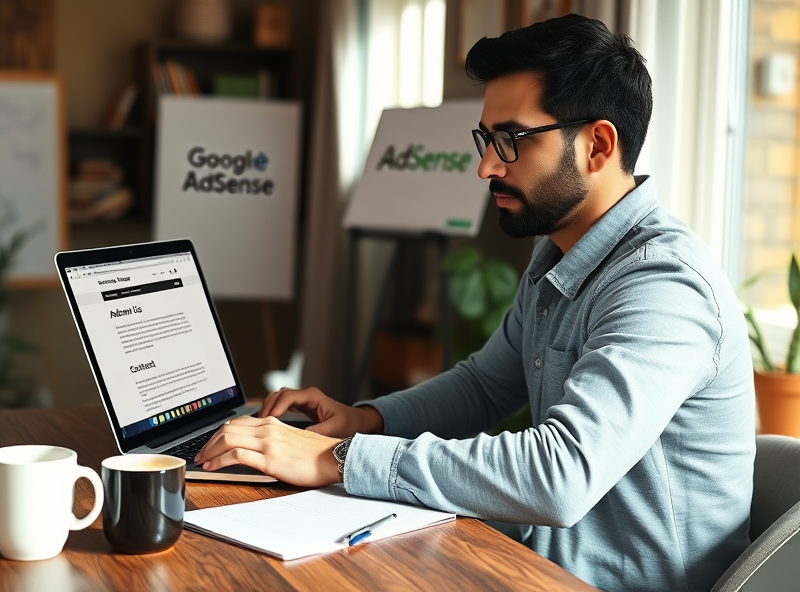
AdSense Approval Mistakes: Avoid These Common Errors to Get Monetized Fast

If you’re a U.S.-based content creator aiming to monetize your blog or website with Google AdSense, getting approved can feel like a major milestone — and it is. But many applicants unknowingly make simple mistakes that delay or even prevent approval. As a digital marketing expert who has helped dozens of American bloggers get approved quickly, I’m here to walk you through the most common pitfalls and how to avoid them. Let’s make sure your site is ready for AdSense the right way.
1. Incomplete or Low-Quality Content
Google prioritizes high-quality, original content. One of the most common reasons for rejection is thin or incomplete content. If your blog posts are under 500 words, poorly written, or stuffed with keywords, AdSense may view your site as lacking value.
To avoid this:
– Ensure each post is at least 800–1,000 words of original, helpful content.
– Use proper grammar and spelling.
– Focus on solving a problem or answering a question your audience has.
– Avoid AI-generated content that lacks human editing or context.
2. Lack of Essential Pages
Google wants to see that your site is trustworthy and transparent. Missing legal and informational pages is a red flag.
Make sure your site includes:
– About Page: Share who you are and what your site is about.
– Contact Page: Include a working email address or contact form.
– Privacy Policy: Clearly explain how you collect and use data.
– Terms & Conditions (optional but recommended): Especially if you sell products or services.
These pages show that you’re serious and compliant with U.S. privacy laws like the CCPA.
3. Poor Website Design and Navigation
A cluttered or confusing website layout can hurt your chances. Google’s reviewers are real people, and they need to be able to navigate your site easily.
To improve your site’s usability:
– Use a clean, mobile-responsive theme.
– Ensure fast loading times (under 3 seconds is ideal).
– Organize content with clear menus and categories.
– Avoid excessive pop-ups or ads before approval.
4. Not Enough Original Blog Posts
Many creators apply with only a few blog posts published. This signals to Google that your site may not be active or valuable.
Before applying:
– Publish at least 15–20 high-quality, original blog posts.
– Make sure each post is indexed in Google Search Console.
– Avoid duplicating content from other websites.
5. Using Copyrighted Images or Content
Using copyrighted material without permission is a serious violation. Google checks for this during the review process.
Instead:
– Use royalty-free images from sites like Unsplash or Pexels.
– Better yet, create your own visuals.
– Always credit sources when required.
6. Traffic Doesn’t Matter — But Engagement Does
Contrary to popular belief, you don’t need thousands of visitors to get approved. However, Google does look at how users interact with your site.
To improve engagement:
– Encourage comments and respond to them.
– Use internal linking to keep users on your site longer.
– Make sure your bounce rate is low (under 60% is a good benchmark).
7. Domain Age and Ownership
While there’s no official minimum domain age in the U.S., a domain that’s only a few days old may raise flags. Google wants to see that your site is established.
Tips:
– Wait at least 1–2 months after launching your site before applying.
– Make sure your domain is registered in your name and not marked as private.
8. Applying Too Soon
Many bloggers rush to apply for AdSense right after launching their site. This is a mistake.
Instead:
– Build your content library.
– Get indexed in Google Search.
– Test your site’s speed and mobile usability.
– Submit your sitemap to Google Search Console.
Final Thoughts
Getting approved for AdSense in the U.S. is very achievable if you take the time to prepare your site properly. Focus on quality, transparency, and user experience. Avoid shortcuts, and don’t rely solely on AI-generated content. If you follow these guidelines, you’ll not only get approved faster but also build a sustainable blog that earns over time.
Have questions about your specific site? Drop them in the comments — I’m happy to help!




